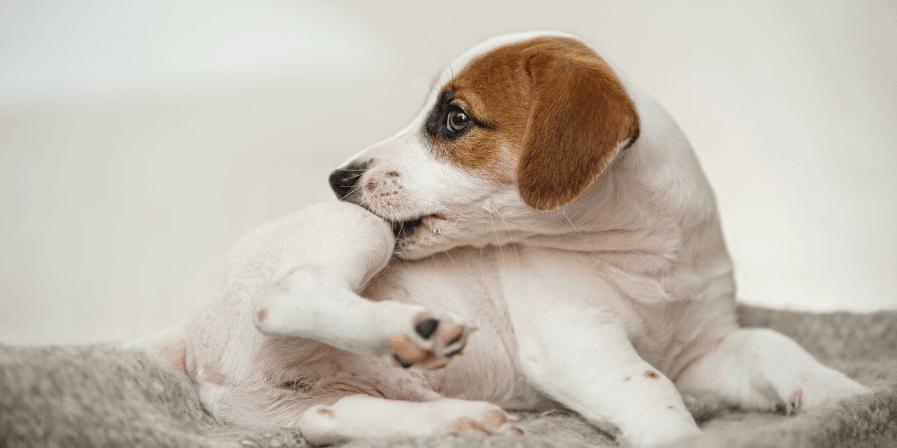How To Get Rid Of Ticks And Fleas On Dogs

Ticks and fleas are common pests that can cause significant discomfort and health issues for dogs. Effective treatment and prevention are crucial to keeping your pet healthy and happy. Here’s a comprehensive guide on how to get rid of ticks and fleas on dogs.
Signs of Ticks and Fleas on Dogs
1. Excessive Scratching and Biting • Dogs infested with ticks or fleas will often scratch or bite their skin frequently, particularly around the neck, ears, and tail.
2. Visible Fleas or Ticks • Fleas are small, brown, and fast-moving. Ticks are larger, can be black or brown, and are often found attached to the skin.
3. Red, Irritated Skin • Flea bites can cause red, inflamed areas, while tick bites might leave a small bump.
4. Hair Loss • Continuous scratching and biting can lead to patches of hair loss.
5. Flea Dirt • Flea dirt looks like tiny black specks on your dog’s skin and fur, which is flea feces consisting of digested blood.
6. Lethargy and Pale Gums • Severe infestations can lead to anemia, resulting in lethargy and pale gums due to blood loss.
Flea and Tick Treatment for Dogs
1. Topical Treatments
• Application: Apply the treatment directly to your dog's skin, usually on the back of the neck.
• Effectiveness: Kills fleas and ticks on contact and can provide protection for up to a month.
• Products: Examples include Frontline, Advantix, and Revolution.
2. Oral Medications
• Administration: Given as a chewable tablet or pill.
• Effectiveness: Kills fleas and ticks when they bite the dog. Some products also prevent heartworms and other parasites.
• Products: Examples include NexGard, Bravecto, and Simparica.
3. Shampoos and Dips
• Usage: Bathe your dog with flea and tick shampoo or dip them in a medicated solution.
• Effectiveness: Provides immediate relief but doesn’t offer long-term protection.
• Products: Available at pet stores and through veterinarians.
4. Sprays and Powders
• Usage: Applied directly to your dog’s coat and bedding.
• Effectiveness: Provides immediate relief and can be used in conjunction with other treatments.
• Products: Various options are available at pet stores.
Home and Yard Treatment
1. Clean Your Home
• Vacuum Regularly: Vacuum carpets, rugs, furniture, and your dog’s bedding to remove fleas and eggs.
• Wash Bedding: Wash your dog’s bedding and soft toys in hot water weekly.
2. Treat Your Yard
• Insecticides: Use yard sprays and granules to kill fleas and ticks in your yard.
• Maintain Lawn: Keep grass trimmed and remove leaf litter where ticks might live.
Preventive Measures
1. Regular Check-Ups
• Veterinary Visits: Regular vet check-ups can help catch and treat flea and tick infestations early.
2. Regular Grooming
• Bathing and Brushing: Regularly bathe and brush your dog to remove fleas, ticks, and flea dirt.
3. Use Preventive Products Year-Round
• Consistency: Ensure consistent use of preventive treatments to keep fleas and ticks at bay throughout the year.
By being proactive and using the right flea and tick treatments for dogs, you can effectively manage and prevent infestations, ensuring your dog stays healthy and comfortable. If you suspect a severe infestation or your dog shows signs of illness, consult your veterinarian for the best course of action.
FAQ’s:
1. What should I do if my dog has a severe flea or tick infestation?
• Consult your veterinarian immediately for the best treatment plan. They may recommend a combination of treatments and preventive measures.
2. How often should I check my dog for ticks?
• It’s good practice to check your dog for ticks daily, especially after spending time outdoors in wooded or grassy areas.
For best animal doctor near me in Delhi, Gurgaon and Noida, please give us a call on 9311560101 or log on to dccpets.in.


 How can we help?
How can we help?